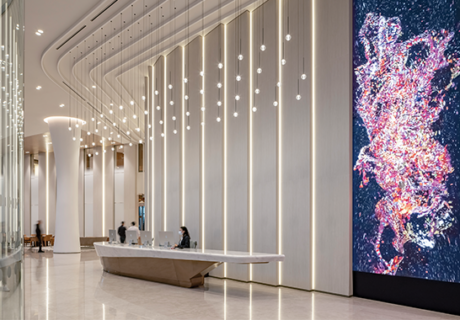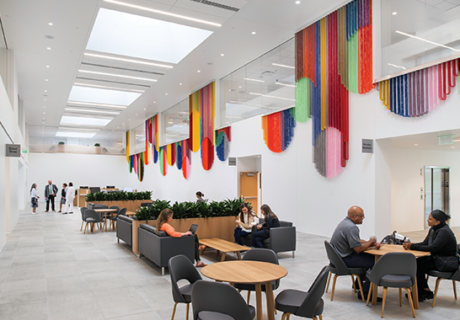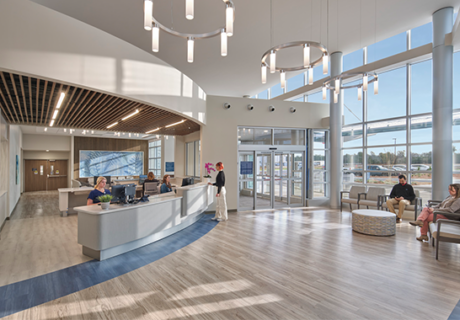Tour: Kaiser Permanente San Diego Central Hospital
Kaiser Permanente shook up the healthcare design industry a few years back when it tasked designers to envision what the future of acute care might look like in its Small Hospital, Big Idea Competition.
On Saturday of the 2014 Healthcare Design Conference in San Diego, attendees got a sneak peek of how the results of the competition are shaping the future of Kaiser Permanente’s built environment, specifically its San Diego Central Hospital.
The hospital, scheduled to open in the fourth quarter of 2016, is primarily based on the organization’s template design; however, its med/surg and ICU rooms were updated in a nod to some of the concepts realized through the competition, including an inboard toilet to allow for a larger window, a handrail from the patient bed to toilet, a samehanded layout, and a deep use of technology.
Kaiser Permanente’s project director Joe Stasney hosted an attendee visit to the 19-acre site, where renderings of the 565,000-square-foot building were shared as well as physical mock-ups of the med/surg and ICU rooms. Representatives from project team members CO Architects and Hensel Phelps were on hand, too.
One of the most notable features of the room is a large monitor integrated in the footwall that serves as an information, care, and entertainment pportal. Other cool touches in the LEED Gold-targeting facility include all LED lights–even LEDs that mimic the circadian rhythm in the patient room– as well as balconies in two locations on each unit.
With a construction start of March 12, the building currently has steel erected, with concrete decks to be poured soon and the exterior skin to be started next. The project also includes a 60,000-square-foot medical office building and 88,000-square-foot energy center.
Prior to the visit to the San Diego Central Hospital site, attendees toured the provider’s Garfield Specialty Medical Offices, an adaptive reuse project that took an existing Class A office space already zoned for medical use and finished it to support a number of specialty and outpatient care clinics.
The 175,000-square-foot project includes six stories, with four built out now and two shelled. With construction conducted in phases between 2009 and 2011, repurposing the building rather than constructing one from the ground up allowed the organization to save an estimated $17 million.
Design challenges included an existing racetrack layout on a narrower floor plate and deeper core than what Kaiser Permanente traditionally uses that caused some challenges for program adjacencies. The team was also charged with adding a gurney-size elevator to the existing building.
The team of GKKWorks and Swinerton Builders shared how the team resolved the project’s inherent bumps through a three-phased approach and highly collaborative environment.
Watch HCDmagazine.com for more coverage of San Diego faciility tours and the Healthcare Design Conference.




